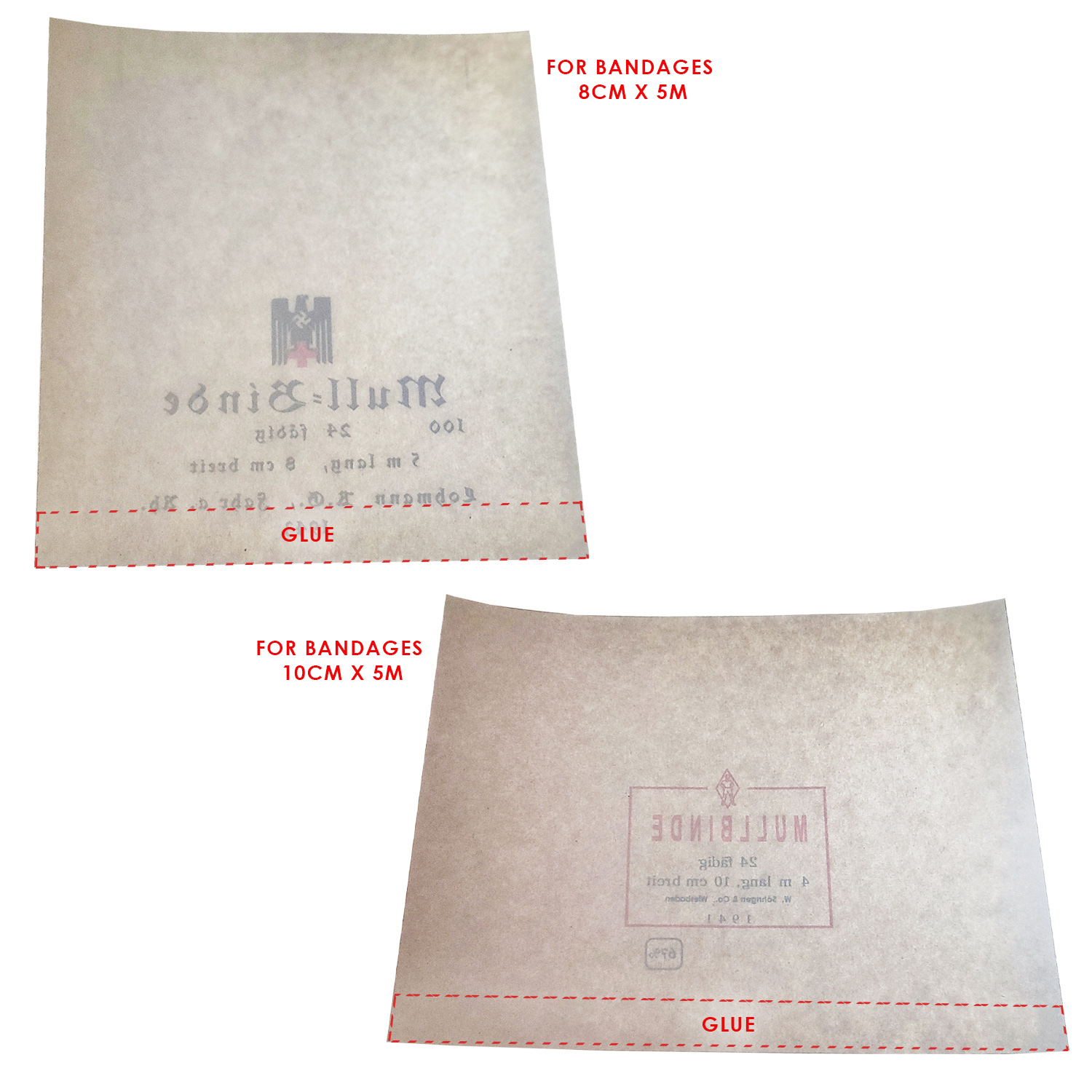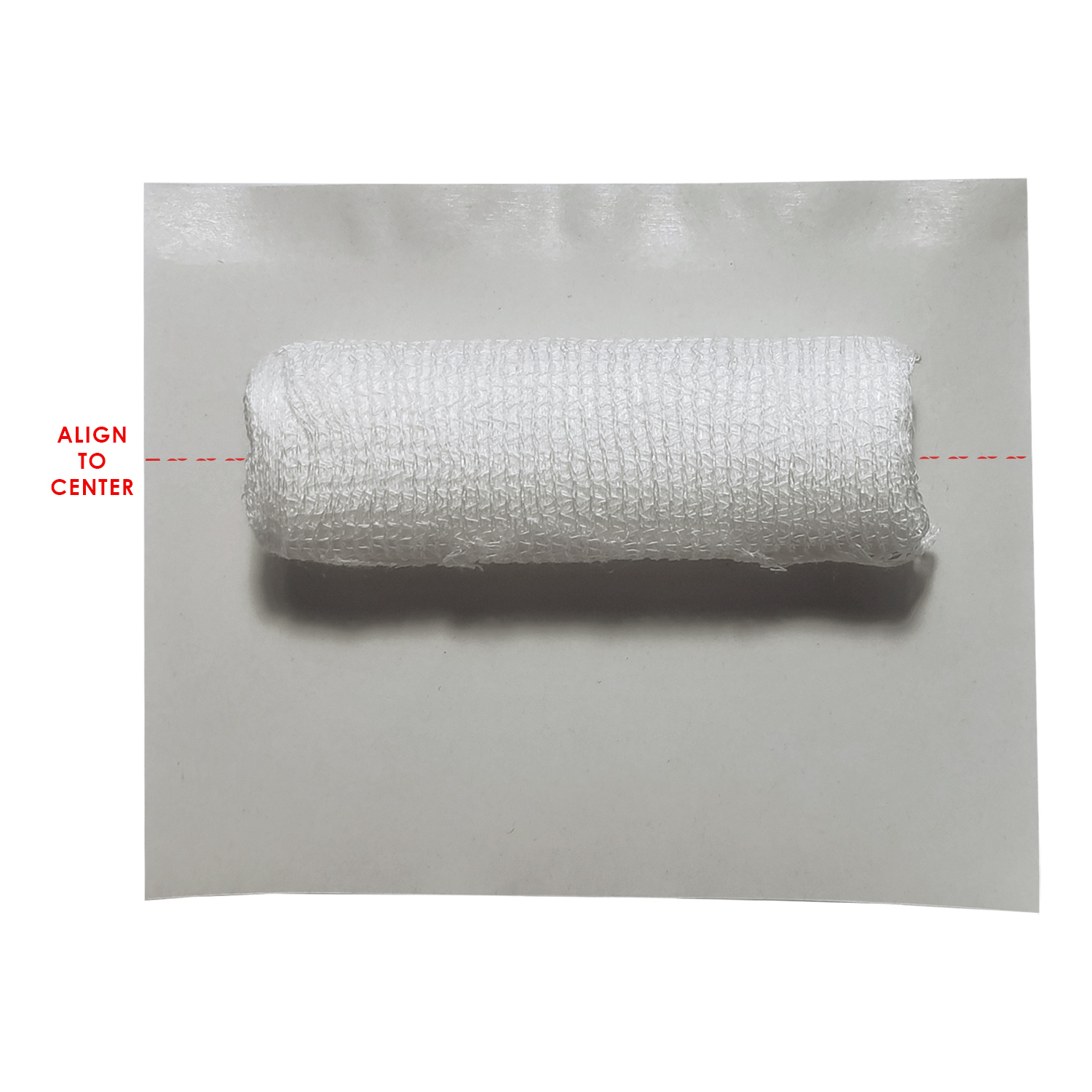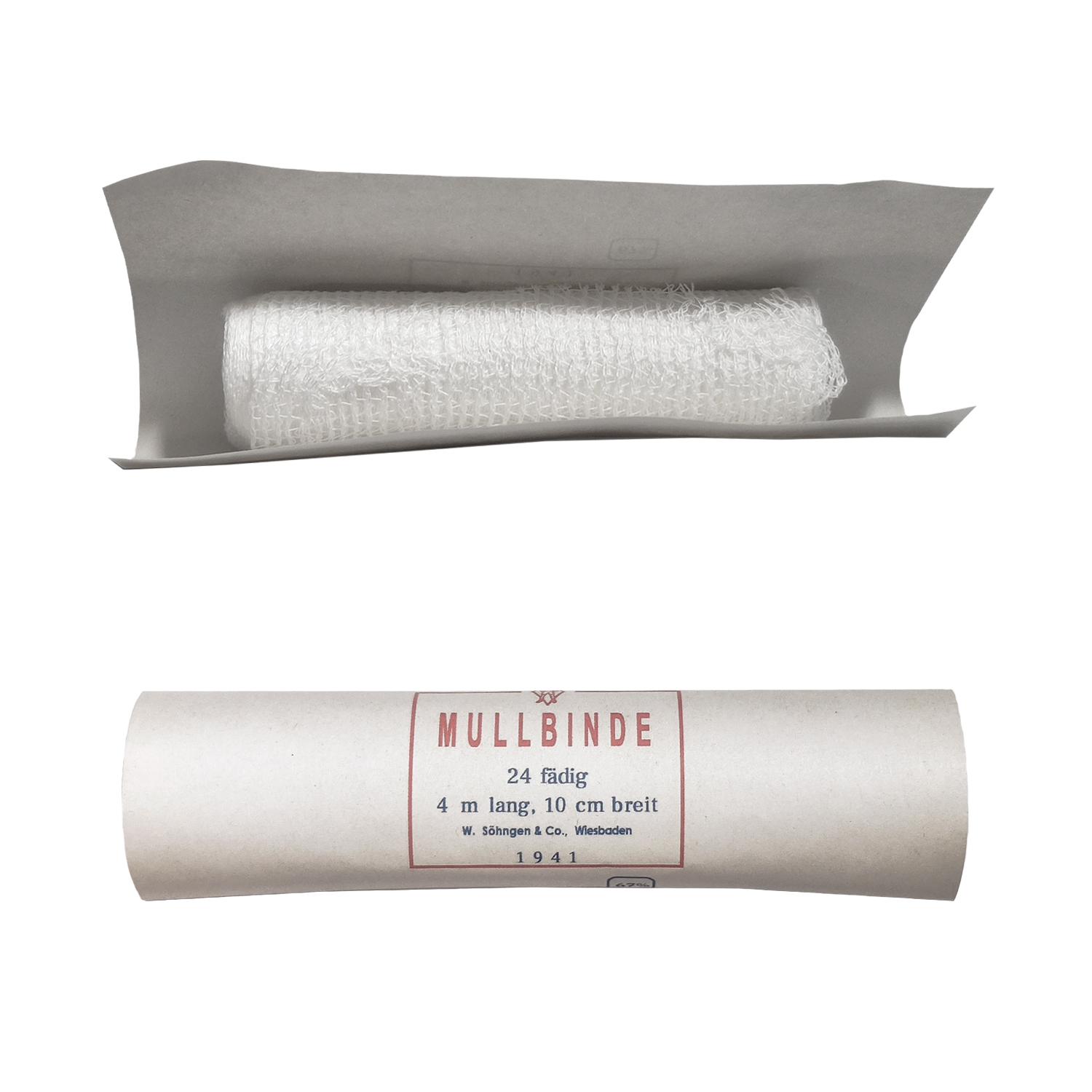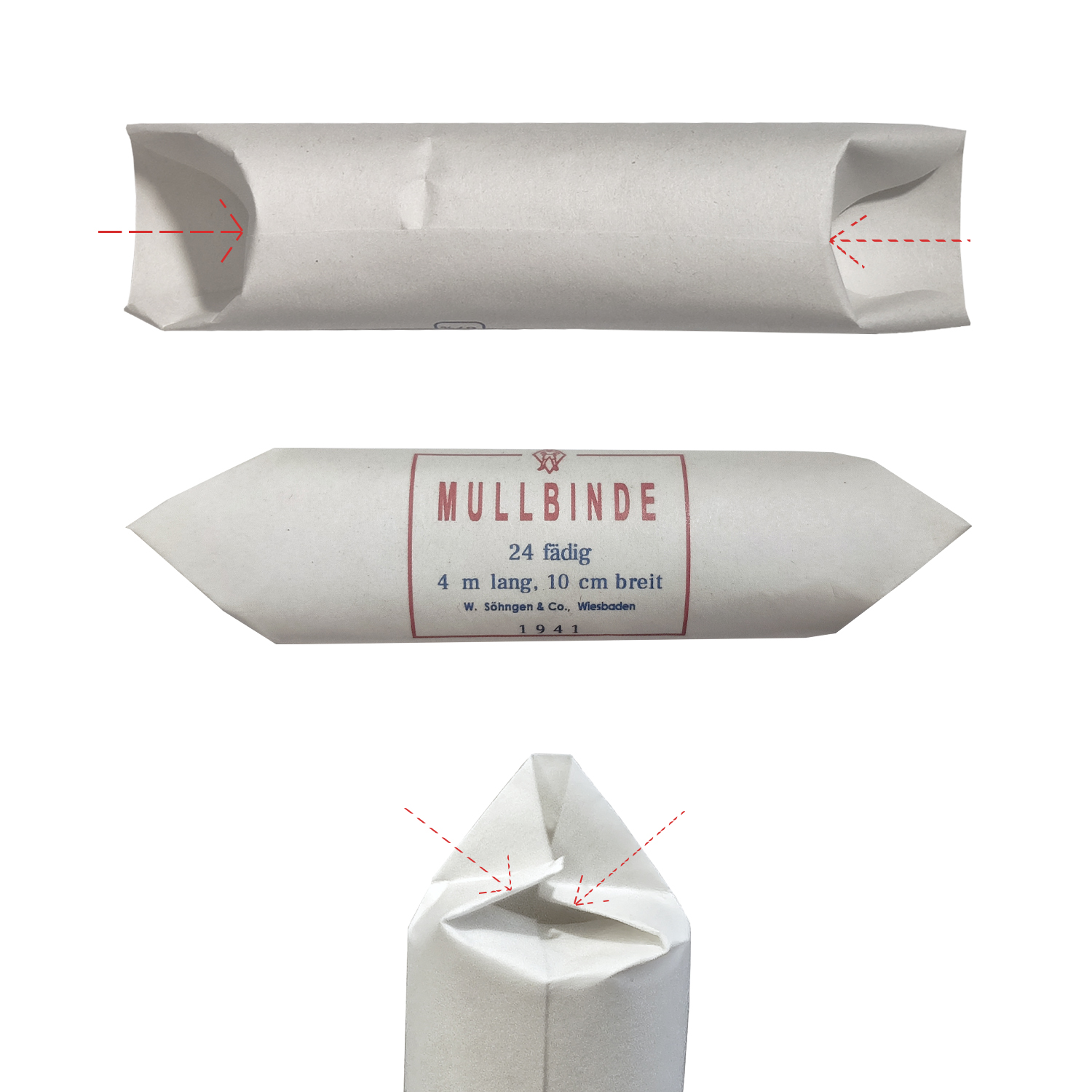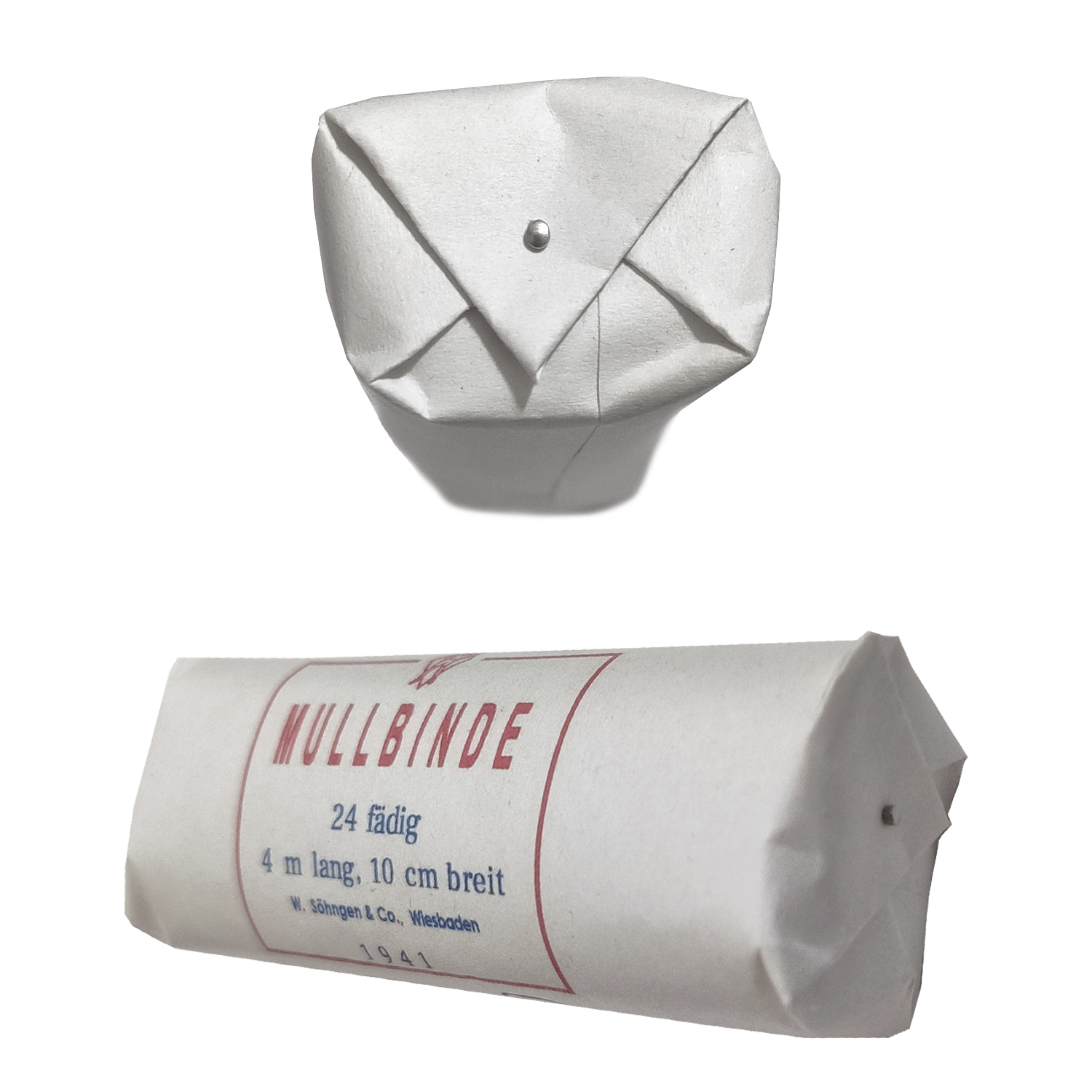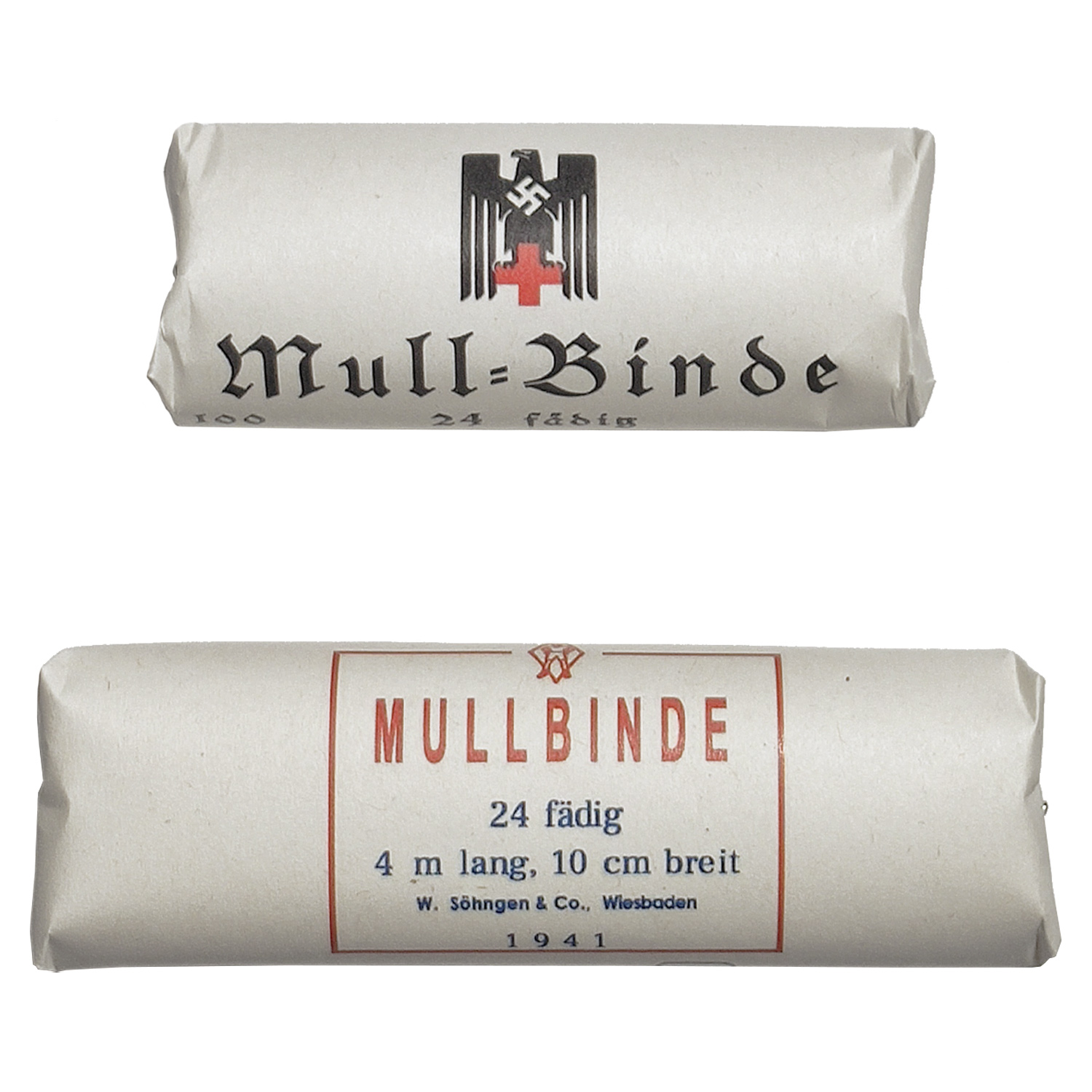[How to] Pack bandages
HISTORY PAPER BANDAGES
During World War II, bandages and dressing materials underwent significant changes in response to the need for more effective treatment of wounded soldiers. One of the most important advancements was the introduction of sterile, pre-prepared bandages, which reduced the risk of infections and allowed for faster treatment on the battlefield. Before this improvement, bandages were often improvised from available materials, increasing the risk of complications in wound healing.
Non-Sterile Bandages and Their Importance
Despite the progress in sterile bandages, non-sterile bandages remained widely used. They were more affordable, easier to produce, and suitable for immediate first aid in the field. These bandages were used to stop bleeding, cover wounds, and support injured limbs. However, since they were not sterile, the risk of infection was higher, which is why they were often combined with disinfectants such as iodine or alcohol. Additionally, they were used to immobilize fractures, often in combination with improvised splints.
Soldiers carried simple non-sterile bandages in their first aid kits, typically packaged in paper or fabric pouches. These packages were lightweight and compact, making them easy to carry as part of a soldier’s personal equipment.
Paper bandage packaging
The German army frequently used bandages packaged in simple paper wrappings that had to be torn open before use. Although these paper packages were practical and lightweight, they had several disadvantages—they were prone to tearing, had poor resistance to moisture, and provided only limited sterility.
The appearance of the packaging varied depending on the manufacturer. Some of the most prominent companies supplying bandage materials for the German Wehrmacht included:
- Paul Hartmann AG (Heidenheim)
- Beiersdorf AG (Hamburg)
As the war progressed, material shortages in Germany increasingly affected the quality of medical supplies. While paper packaging was relatively durable in the early years of the war, after 1942, cost-cutting measures led to thinner and less durable paper wrappings, which were more susceptible to damage in wet or extreme conditions. Despite these changes, the basic concept of paper packaging remained in use until the end of the war.
Conclusion
The evolution of bandages during World War II reflected the need for fast and efficient medical care in combat conditions. Sterile bandages provided better protection against infections, while non-sterile variants remained an essential part of soldiers’ equipment. The quality of packaging declined over time due to wartime resource constraints, but its practical application persisted until the end of the conflict.
NOW LET'S LOOK AT SIMPLE INSTRUCTIONS ON HOW TO PACK A MODERN BANDAGE INTO A BANDAGE PACKAGING.
1. Step
Unpack the modern bandage and apply to the marked area from the inside.
2. Step
Align to center and align to print level from inside.
3. Step
Roll up the label and tape the bandage into a roll shape. As if you were rolling a cigarette by hand.
4. Step
Fold the back from the printed side as the first step. Then bend the sides so that you are left with a cylinder with two tips.
5. Step
Bend the last edges and pin them with a regular pin.
BANDAGES IS READY TO USE

